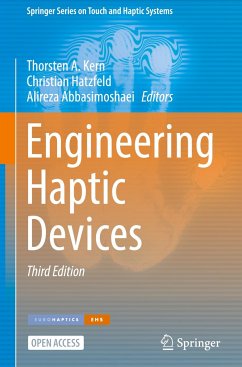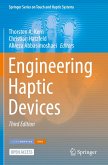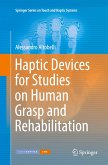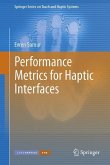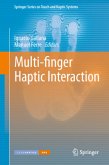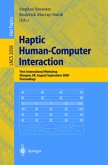This is an open access book.
In this third edition of Engineering Haptic Devices the software part was rewritten from scratch and now includes even more details on tactile and texture interaction modalities. The kinematics section was improved to extend beyond a pure knowledge explanation to a comprehensive guideline on how to actually do and implement haptic kinematic functions. The control section was reworked incorporating some hands-on experience on control implementation on haptic systems. The system, actuator and sensor design chapters were updated to allow easier access to the content.
This book is written for students and engineers faced with the development of a task-specific haptic system. Now 14 years after its first edition, it is still a reference for the basics of haptic interaction and existing haptic systems and methods as well as an excellent source of information for technical questions arising in the design process of systems and components.
Following a system engineering approach, it is divided into two parts with Part I containing background and reference information as a knowledge basis. Typical application areas of haptic systems and a thorough analysis of haptics as an interaction modality are introduced. The role of users in the design of haptic systems is discussed and relevant design and development stages are outlined. Part II presents all related challenges in the design of haptic systems including general system architecture and control structures, kinematics, actuator principles and all types of sensors you may encounter doing haptic device development. Beside these hardware and mechanical topics, further chapters examine state-of-the-art interfaces to operate the devices, and hardware and software development to push haptic systems to their limits.
In this third edition of Engineering Haptic Devices the software part was rewritten from scratch and now includes even more details on tactile and texture interaction modalities. The kinematics section was improved to extend beyond a pure knowledge explanation to a comprehensive guideline on how to actually do and implement haptic kinematic functions. The control section was reworked incorporating some hands-on experience on control implementation on haptic systems. The system, actuator and sensor design chapters were updated to allow easier access to the content.
This book is written for students and engineers faced with the development of a task-specific haptic system. Now 14 years after its first edition, it is still a reference for the basics of haptic interaction and existing haptic systems and methods as well as an excellent source of information for technical questions arising in the design process of systems and components.
Following a system engineering approach, it is divided into two parts with Part I containing background and reference information as a knowledge basis. Typical application areas of haptic systems and a thorough analysis of haptics as an interaction modality are introduced. The role of users in the design of haptic systems is discussed and relevant design and development stages are outlined. Part II presents all related challenges in the design of haptic systems including general system architecture and control structures, kinematics, actuator principles and all types of sensors you may encounter doing haptic device development. Beside these hardware and mechanical topics, further chapters examine state-of-the-art interfaces to operate the devices, and hardware and software development to push haptic systems to their limits.

